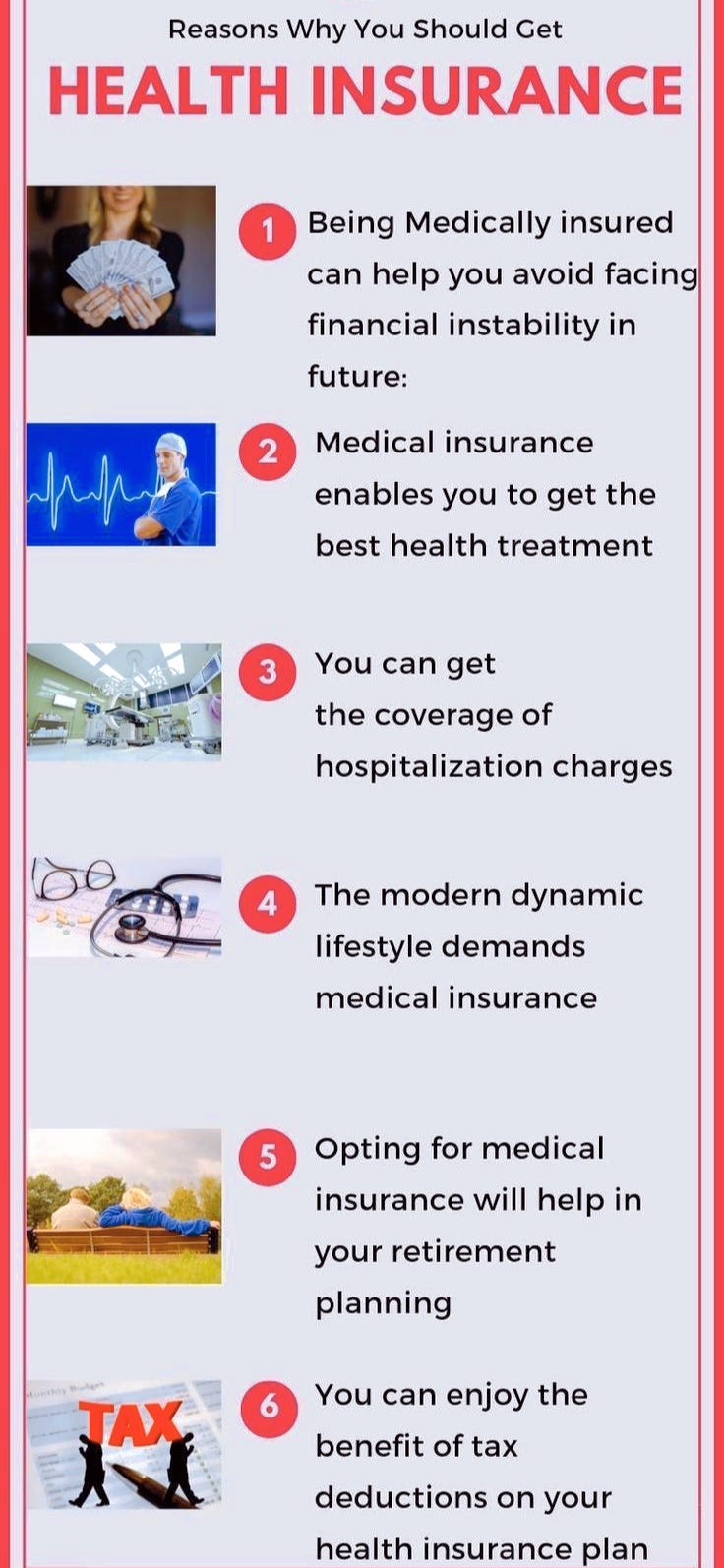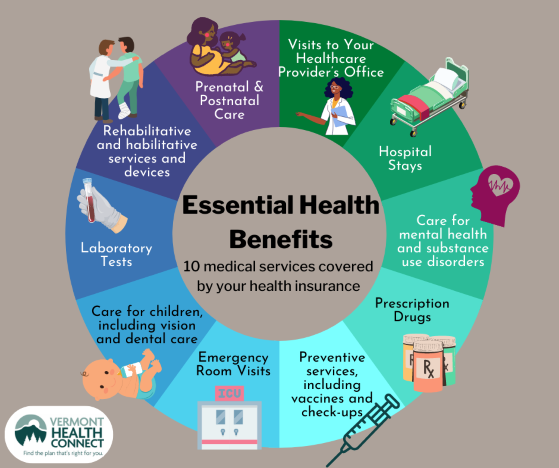All about Medicare Advantage Agent
All about Medicare Advantage Agent
Blog Article
The Ultimate Guide To Medicare Advantage Agent
Table of ContentsThe Single Strategy To Use For Medicare Advantage AgentThe Medicare Advantage Agent StatementsThe 8-Minute Rule for Medicare Advantage Agent

adheres to from puzzling the reasonably young age account of the uninsured with the far better health and wellness, typically, of more youthful individuals. This obscures the link in between health standing and health and wellness insurance. For those without accessibility to work environment wellness insurance coverage, bad health and wellness is a prospective barrier to purchasing nongroup protection due to the fact that such protection might be highly valued, exclude pre-existing conditions, or be merely inaccessible. The number of uninsured Americans is not particularly big and has actually not altered over the last few years. Seven out of 10 respondents in a nationally depictive study thought that less Americans did not have health insurance coverage than actually do(Fronstin, 1998). Approximately fifty percent(47 percent )thought that the variety of people without medical insurance decreased or stayed constant over the latter half of the last years(Blendon et al., 1999). This decline of almost 2 million in the number of people 'without insurance (a decrease
of about 4 percent)is definitely a positive modification. With a softer economic situation in 2000 the most up to date reported gains in insurance protection might not continue(Fronstin, 2001 ). The decrease in the variety of uninsured will not proceed if the economy remains sluggish and healthcare costs continue to surpass inflation. This is due to the fact that the data were gathered for a period of strong economic performance. Of the estimated 42 million individuals that were without insurance, all yet concerning 420,000(concerning 1 percent)were under 65 years old, the age at which most Americans come to be qualified for Medicare; 32 million were grownups in between ages 18 and 65, around 19 percent of all adults in this age; and 10 million were kids under 18 years old, concerning 13.9 percent of all youngsters (Mills, 2000). These quotes of the variety of individuals uninsured are generated from the annual March Supplement to the Existing Populace Survey (CPS), conducted by the Demographics Bureau. Unless or else noted, national price quotes of individuals without medical insurance and proportions of the populace with different kinds of insurance coverage are based upon the CPS, one of the most commonly used resource of quotes of insurance protection and uninsurance prices. These studies and the quotes they produce are explained briefly in Table B. 1 in Appendix B - Medicare Advantage Agent. These studies vary in size and tasting techniques, the questions that are asked concerning insurance policy
The Of Medicare Advantage Agent
coverage, and the time period over which insurance policy protection or uninsurance is measured(Lewis et al., 1998, Fronstin, 2000a ). Still, the CPS is particularly beneficial because it creates yearly quotes relatively promptly, reporting the previous year's insurance policy protection estimates each September, and since it is the basis for a regular set of estimates for more than two decades, permitting analysis of trends in coverage with time.

The Of Medicare Advantage Agent
Over a three-year duration beginning early in 1993, 72 million people, 29 percent of the U.S. populace, lacked insurance coverage for a minimum of one month. Within a single year(1994), 53 million people experienced a minimum of a month without coverage(Bennefield, 1998a). Six out of every 10 uninsured grownups are themselves employed. Although functioning does improve the chance that a person and one's relative will have insurance, it is not a guarantee. Even participants of family members with two permanent breadwinner have practically a one-in-ten possibility of being uninsured (9.1 percent without insurance price)(Hoffman and Pohl, 2000 ). The connection between wellness insurance policy and access to care is well established, as recorded later in this chapter. The partnership in between wellness insurance policy and health results is neither direct nor easy, a substantial professional and wellness solutions study literary works web links wellness insurance policy coverage
to improved better to care, better quality, and improved personal individual population health status. The 2nd report, on personal health and wellness results for uninsured adults, is represented by the inner circle of the number, while the third record, on family members health, incorporates the subjects of the 2nd record however emphasizes a various system of analysis, namely, the family. The 6th report in the series will certainly offer info regarding approaches and efforts undertaken in your area, statewide, or country wide to address the absence of insurance coverage and its adverse influences. Levels of evaluation for analyzing the results of uninsurance. This discussion of wellness insurance policy protection concentrates primarily on the united state populace under age 65 because basically all Americans 65 and older have Medicare or other public insurance coverage.
It focuses particularly on those without any type of wellness insurance coverage for any length of time. The problems dealt with by the underinsured are in some aspects similar to those faced by the uninsured, although they are typically less severe. Uninsurance and underinsurance, however, involve definitely various policy issues, and the approaches for addressing them may vary. Throughout this research study and the five reports to adhere to, the major emphasis is on persons with no health insurance and thus no assistance in spending for health and wellness treatment past what is offered with charity and safeguard organizations. Medical insurance is a powerful element affecting invoice of care because both patients and medical professionals respond to the out-of-pocket rate of services. Health and wellness insurance coverage, however, is neither essential nor sufficient to access to medical services. Nonetheless, the independent and direct result of health and wellness
insurance protection on access to wellness solutions is well established. Others will certainly obtain the healthcare they need even without health insurance policy, by paying for it expense or seeking it from suppliers who supply care free or at extremely subsidized rates. For still others, medical insurance alone does not guarantee click site receipt of care as a result of other nonfinancial barriers, such as a lack of healthcare service providers in their community, restricted accessibility to transportation, illiteracy, or etymological and social differences. Formal research concerning uninsured populations in the click this link United States dates to the late 1920s and early 1930s when the Committee on the Cost of Healthcare generated a collection of reports concerning funding physician office check outs and hospital stays. This problem ended up being salient as the numbers of medically indigent climbed up throughout the Great Depression. Empirical studies constantly support the link between access to care and enhanced health and wellness results(Bindman et al., 1995; Starfield, 1995 ). Having a routine resource of care can be taken into consideration a predictor of accessibility, instead of a straight step of it, when health results are themselves made use of as accessibility indicators. This extension of the notion of gain access to measurement was made by the IOM Board on Keeping Track Of Accessibility to Personal Healthcare Solutions(Millman, 1993, p. Whether or not parents are insured appears to influence whether their children get care along with exactly how much careeven if the kids themselves have insurance coverage(Hanson, 1998). The wellness of parents can impact their capability to care for their children and the level of family members stress. Fretting regarding their kids's accessibility to care is itself a source of tension for parents. Three phases follow in this record. Chapter 2 offers an overview of exactly how employment-based medical insurance, public programs and individual insurance coverage operate and interact to offer extensive however insufficient protection of the united state populace. This includes a testimonial of historical trends and public plans affecting both public and exclusive insurance coverage, a discussion of the communications amongst the different kinds of insurance policy, and an evaluation of why individuals relocate from one program to an additional or finish up

Report this page